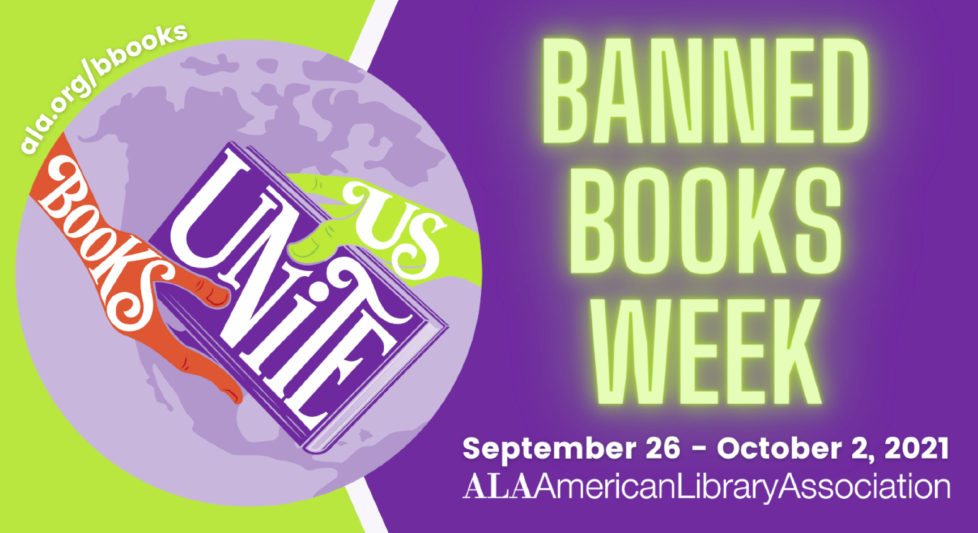Danny Federico
news@greenepublishing.com
“Censorship is telling a man he can’t have a steak just because a baby can’t chew it.” (Mark Twain)
“I hate it that Americans are taught to fear some books and some ideas as though they were diseases.” (Kurt Vonnegut)
"Think for yourselves and let others enjoy the privilege to do so, too." (Voltaire)
“Do you know why books such as this are so important? Because they have quality. And what does the word quality mean? To me it means texture. This book has pores.” (Professor Faber, Fahrenheit 451)
Banned Books Week began in 1982, when it was co-founded by Judith Krug, former director of the Office for Intellectual Freedom at the American Library Association (ALA) and executive director of the Freedom to Read Foundation, in response to the sudden surge in the number of challenges to books in schools, bookstores and libraries.
A challenge refers to an attempt to remove or restrict books or materials based on the objections of a person or group; banning means the books or materials have been removed. One of the many challenges was the famous Island Trees School District v. Pico Supreme Court case, in which it was ruled school officials aren't allowed to ban books in libraries simply because of their content.
Now, Banned Books Week is held during the last week of September to both bring awareness to literature being banned, as well as celebrate the freedom to read. In highlighting attempts, both current and historical, to censor the public's ability to read certain books in bookstores, libraries and schools, Banned Books Week opens up discussions into the power literature has to create a uniting force. This year, the ALA's Banned Books Week theme is “Books Unite Us. Censorship Divides Us.”
“Sharing stories important to us means sharing a part of ourselves. Books reach across boundaries and build connections between readers. Censorship, on the other hand, creates barriers,” the ALA states on its website. “The books featured during Banned Books Week have all been targeted for removal or restriction in libraries and schools. By focusing on efforts across the country to remove or restrict access to books, Banned Books Week draws national attention to the harms of censorship.”
“While books have been and continue to be banned, part of the Banned Books Week celebration is the fact that, in a majority of cases, the books have remained available. This happens only thanks to the efforts of librarians, teachers, students and community members who stand up and speak out for the freedom to read,” the ALA website states.
Classic novels, many of which are known for being required reading materials in schools, have been challenged numerous times and even banned in various countries. A few of these, as listed by the ALA, include works, such as “The Great Gatsby” by F. Scott Fitzgerald; “The Catcher in the Rye” by JD Salinger; “1984” by George Orwell; “Gone with the Wind” by Margaret Mitchell; “The Color Purple” by Alice Walker; “Brave New World” by Aldous Huxley; “The Lord of the Flies” by William Golding and even “The Lord of the Rings” by J.R.R. Tolkien.
Today, Banned Books Week reaches approximately 2.8 billion readers and more than 90,000 publishing industries and library subscribers. However, books continue to be challenged and banned to this day. The ALA goes on to list the top 10 challenged books of 2020. The top themes include racism, racial injustice, stories shared from Black, Indigenous and people of color, as well as LGBTQIA+ content. Included in this list are:
• “George” by Alex Gino, which was challenged, banned and restricted for LGBTQIA+ content, conflicting with a religious viewpoint and not reflecting “the values of our community.”
• “Stamped: Racism, Antiracism, and You” by Ibram X. Kendi and Jason Reynolds, which was challenged and banned because of the author's public statements and because of claims that the book contains “selective storytelling incidents” and does not encompass racism against all people.
• “All American Boys” by Jason Reynolds and Brendan Kiely, which was challenged and banned for profanity, drug use and alcoholism and because it was thought to promote anti-police views, contain divisive topics and be “too much of a sensitive matter right now.”
• “Speak” by Laurie Halse Anderson, which was challenged, banned and restricted because it was thought to contain a political viewpoint and it was claimed to be biased against male students and for the novel's inclusion of rape and profanity.
• “The Absolutely True Diary of a Part-Time Indian” by Sherman Alexie, which was challenged and banned for profanity, sexual references and allegations of sexual misconduct by the author.
• “Something Happened in Our Town: A Child's Story About Racial Injustice” by Marianne Celano, Marietta Collins and Ann Hazzard, illustrated by Jennifer Zivoin, which was challenged for “divisive language” and because it was thought to promote anti-police views.
• “To Kill a Mockingbird” by Harper Lee which was challenged and banned for racial slurs and their negative effect on students, featuring a “white savior” character and its perception of the Black experience.
• “Of Mice and Men” by John Steinbeck, which was challenged and banned for racial slurs and racist stereotypes and their negative effect on students.
• “The Bluest Eye” by Toni Morrison, which was challenged and banned because it was considered sexually explicit and depicts child sexual abuse.
• “The Hate U Give” by Angie Thomas, which was challenged for profanity and it was thought to promote an anti-police message.
Join your public or school library in the fight against censorship. To view a full list of frequently challenged books, visit ala.org/advocacy/bbooks/frequentlychallengedbooks. For residents in Madison, Suwannee and Hamilton Counties, to find a Suwannee River Regional Library System location near you, visit srrlib.org. For residents of Lafayette County, the Lafayette County Public Library is located at 120 NE Crawford St., in Mayo.

